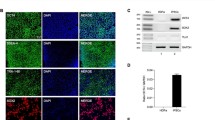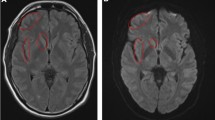Abstract
The β-herpesvirus human herpesvirus-6 (HHV-6) is becoming increasingly recognized as an important pathogen in immunocompromised patients, particularly in post bone marrow transplant (BMT). Reactivation of latent HHV-6 resulting in encephalitis has been reported in BMT and stem cell transplant (SCT) patients. The development of HHV-6 encephalitis can be a fatal complication, the frequency of which is increasing likely due to improved diagnosis with quantitative polymerase chain reaction (PCR) of cerebrospinal fluid. There are currently no antiviral compounds approved for HHV-6, nor have any controlled clinical trials been conducted. The frequency and severity of HHV-6 encephalitis in both immunocompetent and immunocompromised patients necessitates studies on the usefulness of currently available anti-viral compounds. The authors compared the antiviral efficacy of four drugs currently used for cytomegalovirus (CMV) infection, a β-herpesvirus sharing homology with HHV-6. In HHV-6A— and HHV-6B—infected T cells, acyclovir, ganciclovir, foscarnet, and cidofovir exhibited antiviral activity consistent with that published in other studies. In HHV-6-infected human astrocytes (U251), however, only foscarnet and cidofovir exhibited antiviral activity and this effect was restricted to infection with HHV-6 variant A. In pathological brain sections from patients with neurological disorders such as multiple sclerosis and epilepsy, HHV-6 has been localized to glial cells. Determination of antiviral activity in human glial fibrillary acidic protein (GFAP)-positive astrocytes of currently used antiviral compounds is essential for potential treatment of HHV-6 and neurological disorders. Our data highlight the necessity for further study of antiviral compound in HHV-6—infected glial cells as well as the development of more selective compounds for HHV-6.
Similar content being viewed by others
References
Ablashi DV, Salahuddin SZ, Josephs SF, Imam F, Lusso P, Gallo RC, Hung C, Lemp J, Markham PD (1987). HBLV (or HHV-6) in human cell lines. Nature 329: 207.
Ahlqvist J, Fotheringham J, Akhyani N, Yao K, Fogdell-Hahn A, Jacobson S (2005). Differential tropism of human herpesvirus 6 (HHV-6) variants and induction of latency by HHV-6A in oligodendrocytes. J NeuroVirol 11: 384–394.
Akhyani N, Berti R, Brennan MB, Soldan SS, Eaton JM, McFarland HF, Jacobson S (2000). Tissue distribution and variant characterization of human herpesvirus (HHV)-6: increased prevalence of HHV-6A in patients with multiple sclerosis. J Infect Dis 182: 1321–1325.
Bethge W, Beck R, Jahn G, Mundinger P, Kanz L, Einsele H (1999). Successful treatment of human herpesvirus-6 encephalitis after bone marrow transplantation. Bone Marrow Transplant 24: 1245–1248.
Birnbaum T, Padovan CS, Sporer B, Rupprecht TA, Ausserer H, Jaeger G, Pfister HW (2005). Severe meningoencephalitis caused by human herpesvirus 6 type B in an immunocompetent woman treated with ganciclovir. Clin Infect Dis 40: 887–889.
Burns WH, Sandford GR (1990). Susceptibility of human herpesvirus 6 to antivirals in vitro. J Infect Dis 162: 634–637.
Campadelli-Fiume G, Mirandola P, Menotti L (1999). Human herpesvirus 6: an emerging pathogen. Emerg Infect Dis 5: 353–566.
Caserta MT, Hall CB, Schnabel K, McIntyre K, Long C, Costanzo M, Dewhurst S, Insel R, Epstein LG (1994). Neuroinvasion and persistence of human herpesvirus 6 in children. J Infect Dis 170: 1586–1589.
Cermelli C, Berti R, Soldan SS, Mayne M, D’Ambrosia JM, Ludwin SK, Jacobson S (2003). High frequency of human herpesvirus 6 DNA in multiple sclerosis plaques isolated by laser microdissection. J Infect Dis 187: 1377–1387.
Challoner PB, Smith KT, Parker JD, MacLeod DL, Coulter SN, Rose TM, Schultz ER, Bennett JL, Garber RL, Chang M, et al (1995). Plaque-associated expression of human herpesvirus 6 in multiple sclerosis. Proc Natl Acad Sci U S A 92: 7440–7444.
Cuomo L, Trivedi P, Cardillo MR, Gagliardi FM, Vecchione A, Caruso R, Calogero A, Frati L, Faggioni A, Ragona G (2001). Human herpesvirus 6 infection in neoplastic and normal brain tissue. J Med Virol 63: 45–51.
De Bolle L, Andrei G, Snoeck R, Zhang Y, Van Lommel A, Otto M, Bousseau A, Roy C, De Clercq E, Naesens L (2004). Potent, selective and cell-mediated inhibition of human herpesvirus 6 at an early stage of viral replication by the non-nucleoside compound CMV423. Biochem Pharmacol 67: 325–336.
De Bolle L, Naesens L, De Clercq E (2005a). Update on human herpesvirus 6 biology, clinical features, and therapy. Clin Microbiol Rev 18: 217–245.
De Bolle L, Van Loon J, De Clercq E, Naesens L (2005b). Quantitative analysis of human herpesvirus 6 cell tropism. J Med Virol 75: 76–85.
De Clercq E (2005). Antiviral drug discovery and development: where chemistry meets with biomedicine. Antiviral Res 67: 56–75.
Denes E, Magy L, Pradeau K, Alain S, Weinbreck P, Ranger-Rogez S (2004). Successful treatment of human herpesvirus 6 encephalomyelitis in immunocompetent patient. Emerg Infect Dis 10: 729–731.
Dewhurst S (2004). Human herpesvirus type 6 and human herpesvirus type 7 infections of the central nervous system. Herpes 11(Suppl 2): 105A-111A.
Donati D, Akhyani N, Fogdell-Hahn A, Cermelli C, Cassiani-Ingoni R, Vortmeyer A, Heiss JD, Cogen P, Gaillard WD, Sato S, Theodore WH, Jacobson S (2003). Detection of human herpesvirus-6 in mesial temporal lobe epilepsy surgical brain resections. Neurology 61: 1405–1411.
Donati D, Martinelli E, Cassiani-Ingoni R, Ahlqvist J, Hou J, Major EO, Jacobson S (2005). Variant-specific tropism of human herpesvirus 6 in human astrocytes. J Virol 79: 9439–9448.
Flebbe-Rehwaldt LM, Wood C, Chandran B (2000). Characterization of transcripts expressed from human herpesvirus 6A strain GS immediate-early region B U16-U17 open reading frames. J Virol 74: 11040–11054.
Ghedin E, Pumfery A, de la Fuente C, Yao K, Miller N, Lacoste V, Quackenbush J, Jacobson S, Kashanchi F (2004). Use of a multi-virus array for the study of human viral and retroviral pathogens: gene expression studies and ChIP-chip analysis. Retrovirology 1: 10.
He J, McCarthy M, Zhou Y, Chandran B, Wood C (1996). Infection of primary human fetal astrocytes by human herpesvirus 6. J Virol 70: 1296–1300.
Hengge UR, Brockmeyer NH, Malessa R, Ravens U, Goos M (1993). Foscarnet penetrates the blood-brain barrier: rationale for therapy of cytomegalovirus encephalitis. Antimicrob Agents Chemother 37: 1010–1014.
Isaacson E, Glaser CA, Forghani B, Amad Z, Wallace M, Armstrong RW, Exner MM, Schmid S (2005). Evidence of human herpesvirus 6 infection in 4 immunocompetent patients with encephalitis. Clin Infect Dis 40: 890–893.
Isegawa Y, Mukai T, Nakano K, Kagawa M, Chen J, Mori Y, Sunagawa T, Kawanishi K, Sashihara J, Hata A, Zou P, Kosuge H, Yamanishi K (1999). Comparison of the complete DNA sequences of human herpesvirus 6 variants A and B. J Virol 73: 8053–8063.
Janelle ME, Flamand L (2006). Phenotypic alterations and survival of monocytes following infection by human herpesvirus-6. Arch Virol 51: 1603–1614.
Kimberlin DW, Whitley RJ (1998). Human herpesvirus-6: neurologic implications of a newly-described viral pathogen. J NeuroVirol 4: 474–485.
Knox KK, Harrington DP, Carrigan DR (1995). Fulminant human herpesvirus six encephalitis in a human immunodeficiency virus-infected infant. J Med Virol 45: 288–292.
Maeda Y, Teshima T, Yamada M, Harada M (2000). Reactivation of human herpesviruses after allogeneic peripheral blood stem cell transplantation and bone marrow transplantation. Leuk Lymphoma 39: 229–239.
Manichanh C, Grenot P, Gautheret-Dejean A, Debre P, Huraux JM, Agut H (2000). Susceptibility of human herpesvirus 6 to antiviral compounds by flow cytometry analysis. Cytometry 40: 135–140.
Maschke M, Kastrup O, Diener HC (2002). CNS manifestations of cytomegalovirus infections: diagnosis and treatment. CNS Drugs 16: 303–315.
Matthews T, Boehme R (1988). Antiviral activity and mechanism of action of ganciclovir. Rev Infect Dis 10(Suppl 3): S490-S494.
Mirandola P, Menegazzi P, Merighi S, Ravaioli T, Cassai E, Di Luca D (1998). Temporal mapping of transcripts in herpesvirus 6 variants. J Virol 72: 3837–3844.
Mookerjee BP, Vogelsang G (1997). Human herpes virus-6 encephalitis after bone marrow transplantation: successful treatment with ganciclovir. Bone Marrow Transplant 20: 905–906.
Niiya H, Azuma T, Jin L, Uchida N, Inoue A, Hasegawa H, Fujita S, Tohyama M, Hashimoto K, Yasukawa M (2004). Transcriptional downregulation of DC-SIGN in human herpesvirus 6-infected dendritic cells. J Gen Virol 85: 2639–2642.
Nitsche A, Muller CW, Radonic A, Landt O, Ellerbrok H, Pauli G, Siegert W (2001). Human herpesvirus 6A DNA Is detected frequently in plasma but rarely in peripheral blood leukocytes of patients after bone marrow transplantation. J Infect Dis 183: 130–133.
Opsahl ML, Kennedy PG (2005). Early and late HHV-6 gene transcripts in multiple sclerosis lesions and normal appearing white matter. Brain 128: 516–527.
Opsahl ML, Kennedy PG (2006). Investigating the presence of human herpesvirus 7 and 8 in multiple sclerosis and normal control brain tissue. J Neurol Sci 240: 37–44.
Oster B, Hollsberg P (2002). Viral gene expression patterns in human herpesvirus 6B-infected T cells. J Virol 76: 7578–7586.
Rapaport D, Engelhard D, Tagger G, Or R, Frenkel N (2002). Antiviral prophylaxis may prevent human herpesvirus-6 reactivation in bone marrow transplant recipients. Transplant Infect Dis 4: 10–16.
Reymen D, Naesens L, Balzarini J, Holy A, Dvorakova H, De Clercq E (1995). Antiviral activity of selected acyclic nucleoside analogues against human herpesvirus 6. Antiviral Res 28: 343–357.
Salahuddin SZ, Ablashi DV, Markham PD, Josephs SF, Sturzenegger S, Kaplan M, Halligan G, Biberfeld P, Wong-Staal F, Kramarsky B, et al (1986). Isolation of a new virus, HBLV, in patients with lymphoproliferative disorders. Science 234: 596–601.
Schneider U, Schwemmle M, Staeheli P (2005). Genome trimming: a unique strategy for replication control employed by Borna disease virus. Proc Natl Acad Sci U S A 102: 3441–3446.
Soldan SS, Berti R, Salem N, Secchiero P, Flamand L, Calabresi PA, Brennan MB, Maloni HW, McFarland HF, Lin HC, Patnaik M, Jacobson S (1997). Association of human herpes virus 6 (HHV-6) with multiple sclerosis: Increased IgM response to HHV-6 early antigen and detection of serum HHV-6 DNA. Nat Med 3: 1394–1397.
Yamanishi K, Okuno T, Shiraki K, Takahashi M, Kondo T, Asano Y, Kurata T (1988). Identification of human herpesvirus-6 as a causal agent for exanthem subitum. Lancet 1: 1065–1067.
Yao K, Mandel M, Akyani N, Maynard K, Sengamalay N, Fotheringham J, Ghedin E, Kashanchi F, Jacobson S (2006). Differential HHV-6A gene expression in T cells and primary human astrocytes based on multi-virus array analysis. Glia 53: 789–798.
Yoshida H, Matsunaga K, Ueda T, Yasumi M, Ishikawa J, Tomiyama Y, Matsuzawa Y (2002). Human herpesvirus 6 meningoencephalitis successfully treated with ganciclovir in a patient who underwent allogeneic bone marrow transplantation from an HLA-identical sibling. Int J Hematol 75: 421–425.
Yoshikawa T, Asano Y, Akimoto S, Ozaki T, Iwasaki T, Kurata T, Goshima F, Nishiyama Y (2002). Latent infection of human herpesvirus 6 in astrocytoma cell line and alteration of cytokine synthesis. J Med Virol 66: 497–505.
Author information
Authors and Affiliations
Corresponding author
Additional information
J.F. is supported by the Canadian Multiple Sclerosis Society.
Rights and permissions
About this article
Cite this article
Akhyani, N., Fotheringham, J., Yao, K. et al. Efficacy of antiviral compounds in human herpesvirus-6-infected glial cells. Journal of NeuroVirology 12, 284–293 (2006). https://doi.org/10.1080/13550280600880772
Received:
Revised:
Accepted:
Issue Date:
DOI: https://doi.org/10.1080/13550280600880772




